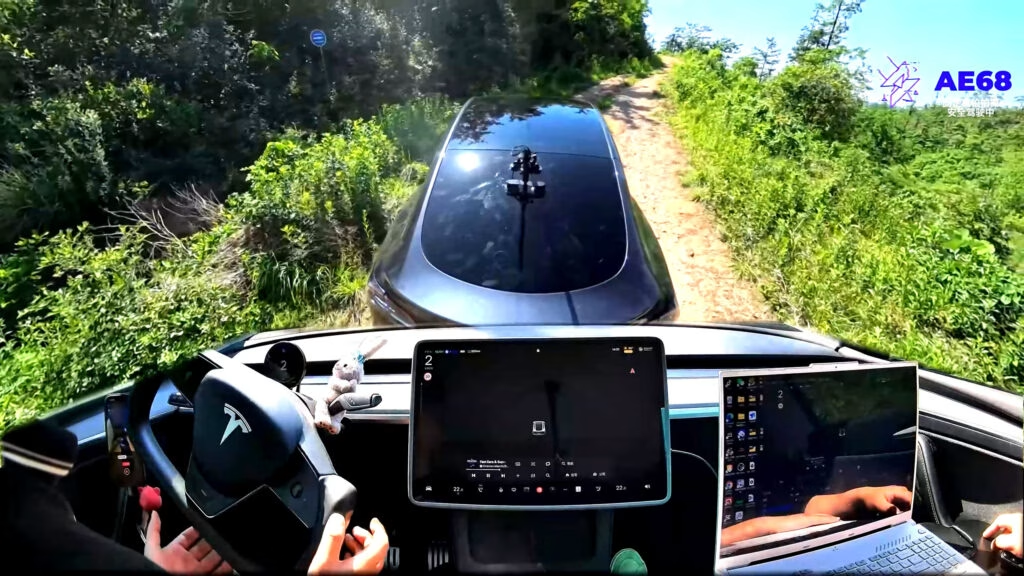Tesla’s Full Self-Driving (FSD) technology is making waves, especially when it ventures into unexpected territory. Recently, videos surfaced showing a Tesla Model Y navigating a narrow, winding mountain trail in rural China—an environment that most would reserve for rugged off-road vehicles, not a tech-savvy crossover. This surprising demonstration of FSD’s capabilities has sparked conversations about the system’s potential and limitations.
What Happened on the Mountain Trail?
In the videos, the Model Y confidently maneuvers along a dirt cliffside road, reaching speeds of up to 28 km/h (about 17.3 mph). The footage, originally shared on the Chinese social media platform Douyin, showcases the car’s ability to navigate challenging terrain, complete with tight turns and steep drops. The driver, however, appears visibly tense, hands hovering over the steering yoke, ready to intervene at any moment. This highlights a crucial aspect of FSD: while the technology is impressive, it still requires human oversight.
The FSD system relies on a camera-based approach, allowing it to interpret the environment and make real-time adjustments. In this case, it successfully kept the Model Y centered on the path, avoiding potential hazards like cliffs and trees. Yet, the experience raises questions about the safety and practicality of using FSD in such extreme conditions.
Is FSD Designed for Off-Roading?
It’s essential to clarify that Tesla did not design FSD for off-road adventures. The system is primarily intended for urban and highway driving, where it can handle traffic, lane changes, and navigation with relative ease. However, as seen in these videos, some Tesla owners are eager to push the boundaries of what FSD can do. This trend raises important considerations about the implications of using advanced driver-assistance systems in environments they weren’t explicitly designed for.
The Risks of Overconfidence
While the Model Y’s performance on the mountain trail is commendable, it also underscores the risks associated with overconfidence in autonomous technology. The driver’s nervous demeanor serves as a reminder that, despite the advancements in FSD, it’s not infallible. What happens when the system encounters an unexpected obstacle or a sudden change in terrain? The potential for accidents increases when drivers rely too heavily on technology without being prepared to take control.
Real-World Examples of FSD in Action
This isn’t the first time Tesla owners have tested FSD in unconventional settings. Other videos have emerged showing Tesla vehicles navigating narrow city streets and highway toll booths, often with mixed results. While some drivers report successful experiences, others have faced challenges, including erratic braking and difficulty with complex maneuvers. These varied outcomes highlight the importance of understanding the limitations of FSD and the need for continuous improvement in the technology.
The Future of Autonomous Driving
As Tesla continues to refine its FSD system, the question remains: how far can this technology go? The recent demonstrations in China suggest that FSD is capable of more than many anticipated, but it also reveals the need for caution. Regulatory bodies are closely monitoring these developments, and the pause in FSD trials in China due to new regulations reflects the ongoing challenges in balancing innovation with safety.
The big takeaway? Tesla’s Full Self-Driving isn’t about perfection—it’s about smarter adjustments. As the technology evolves, it’s crucial for drivers to remain engaged and informed. For those eager to explore the capabilities of FSD, starting with one small change this week—like testing it in a controlled environment—could lead to fascinating insights by month’s end.

